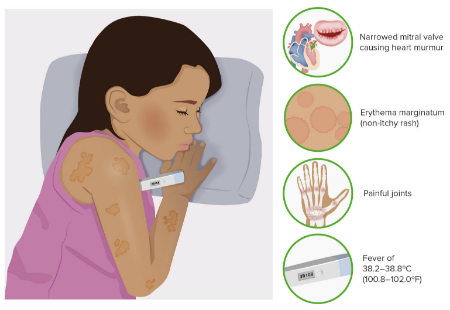The umbilical cord that connected you to your mother before birth remains in the shape of the navel after birth. Navels come in different shapes and sizes. Maybe yours is recessed or prominent.
After the navel heals after birth, it doesn’t get much attention anymore. But like any other part of the skin or body, it can become infected. Belly button infections are usually not very serious, but should be checked by a doctor.
Your belly button will not be noticed after you have recovered from the birth. But like any part of your skin or body, it can become infected.
Types of navel infection
Your belly button is a sensitive area with many small folds that can trap moisture, dirt and debris. This moist and warm area is an ideal place for fungus and yeast to grow. The most common types of navel infections are:
• Bacterial infections: When harmful bacteria enter the navel and multiply, they lead to infection. Staphylococcus aureus (staph infection) and Streptococcus species (strep infection) are the most common agents.
• Fungal/yeast infections: Fungi (including yeast) can cause navel infections, especially in warm, humid environments. Yeast overgrowth (usually Candida species) can occur anywhere on your body, including the vagina, penis, mouth, throat, and navel.
Common causes of navel infection
While bacteria, fungi, and yeast all thrive in moist, dark environments, several factors can increase these factors and cause navel infections. These factors include:
• Poor hygiene: Not cleaning the navel regularly can lead to the accumulation of dirt, sweat and dead skin cells, creating a suitable breeding ground for bacteria and fungi.
• Piercing: piercing the navel can lead to a small wound that will be the place for bacteria to enter and cause infection.
• Obesity: People with more abdominal fat may be more exposed to navel infections, because moisture and bacteria easily collect in the skin folds of that area.
• Diabetes: People with diabetes have a higher risk of contracting various infections, including navel infection, due to the weakening of the immune system and impaired blood flow.
• Excessive sweating: Profuse sweat, especially in hot weather or during exercise, can contribute to the growth of bacteria and yeast in the navel.
• Laparoscopic surgery: the surgical wound on or near the navel is susceptible to infection if hygiene and dryness are not observed.
If you see symptoms such as redness, swelling, pus, pain, or an unpleasant smell from the navel, you should see a doctor to ensure proper treatment to remove the infection.
Signs and symptoms of navel infection
One of the first symptoms you may notice is foul-smelling discharge and redness in or around the navel. If your navel looks redder and slightly swollen than usual, and pus discharges with an unpleasant smell, you may have an infection. Other symptoms to look out for include:
• Pain and tenderness
• Itching
• Fever

Treatment of navel infection
If you see any of the mentioned symptoms and suspect that you have a navel infection, be sure to see your doctor. In addition to a thorough examination, the doctor will prescribe instructions for home care and, if necessary, appropriate topical or oral medications.
Mild bacterial or fungal infections are usually treated with topical alcohol, antibiotic ointment, or antifungal medications. But if the infection spreads, it may be necessary to take oral medications along with topical treatments.
During treatment, wash the navel gently with mild soap and water daily and make sure it is completely dry, as moisture promotes the growth of bacteria and yeast.
Prevention tips for navel infection
Preventing navel infection is easier than dealing with it. Follow these simple guidelines to reduce your risk:
1. Regular cleaning: Regularly, especially when bathing or showering, gently clean the inner folds of the belly button with mild soap and water to remove dirt and debris. After cleaning, gently pat the belly button with a towel. Dry gently so that no moisture remains.
2. Avoid piercing infection: If you are going to get your navel pierced, make sure it is done by a professional and using sterile tools. Also, carefully follow the aftercare instructions provided by the piercer.
3. Weight control and diabetes: If you have diabetes and are overweight, work with your doctor to effectively manage the condition.
4. Staying cool and dry: In hot weather or during exercise, keep the abdominal area as dry as possible.
5. Wearing cotton clothes: Wear breathable, cotton clothes that allow air to circulate around the navel.
By following these simple tips and proper health care, you can prevent navel infection and ensure the health of your navel. Remember that if you see any suspicious symptoms, it is necessary to see a doctor for early diagnosis and treatment.
Frequently asked questions about navel infection
1. What can I expect if I get a fungal infection of the navel?
When you keep your navel area clean and dry, navel yeast infections often get better on their own. Healthy people can usually treat navel yeast infections with antifungal medications.
2. How long does a fungal infection of the navel last?
Your navel yeast infection should go away within two weeks of starting antifungal treatment.
3. What complications are caused by a fungal infection of the navel?
Belly yeast infections often recur, especially if your belly button area is not healthy and dry. Yeast infections are more likely to return in people with a weak immune system.
4. Can navel infection be serious?
In most cases, navel infection is mild and will heal quickly with proper treatment. However, in some cases, a navel infection can be more serious and lead to complications such as:
The spread of infection to other parts of the body, the creation of an abscess in the navel, bone infection and inflammation of the navel If you have symptoms of navel infection, it is better to see a doctor to make sure it is serious.
5. Can navel infection be transmitted through skin contact?
Yes, navel infection can be spread from person to person through skin contact. Bacteria and fungi that cause navel infection can be transmitted to a healthy person through contact with the navel of an infected person.
Final advice
Umbilical yeast infection can be itchy and uncomfortable. But it is easily treatable. You can prevent navel yeast infection by keeping the navel area clean and dry. If you have symptoms of a yeast infection in the navel, call your doctor. They can diagnose your condition correctly. They may recommend an antifungal treatment to help you feel better soon.










